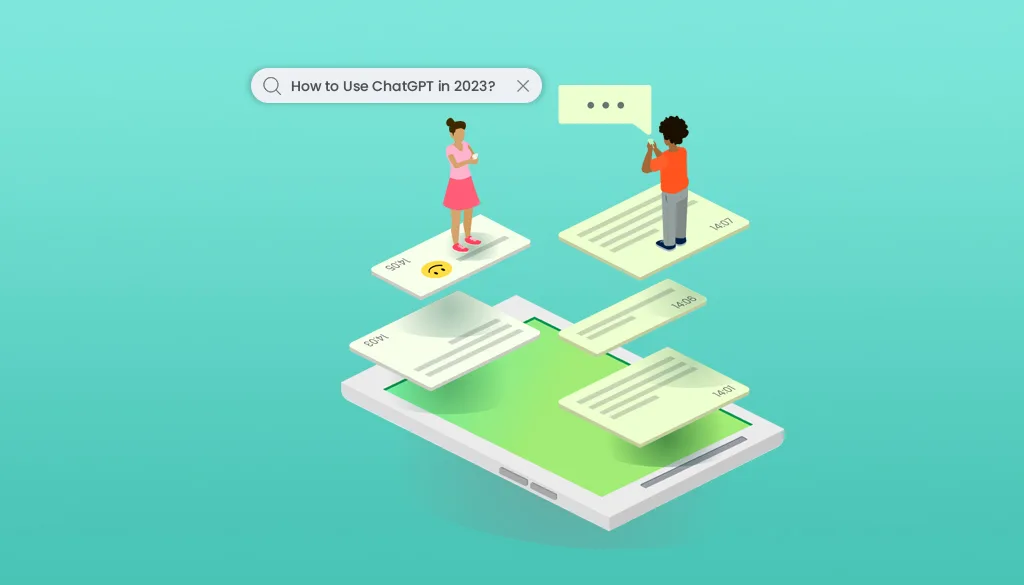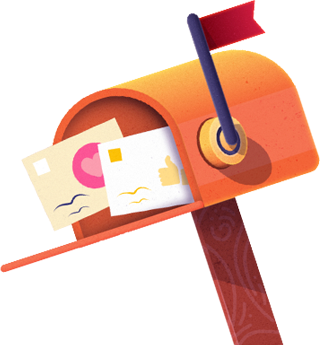As everyone is aware, Chat GPT is currently a hot topic of discussion, so I’m sharing some lesser known and interesting facts along with some Pros and Cons about ChatGPT in this blog.
“Imagine having access to the sum total of human knowledge and the ability to communicate with you in a natural, human-like manner – that is the power of ChatGPT, the cutting-edge AI language model. “The technology underlying chatbots and virtual assistants has become a foundation of the modern sector. Modern conversational AI model ChatGPT, created by Open AI, is at the forefront of this evolution.”
The full form Of Chat GPT is Chat Generative Pre-Trained Transformer. It is a pioneering AI technology that helps the user in looking for long-form question answers. It is surprising how well Chat GPT can converse in a way that is understandable to a person.
CHAT GPT is specifically developed to provide human-like responses in chatbot applications, where it can consider the context of the interaction and generate appropriate responses based on the conversation history. It is also capable of dealing with a wide range of issues and producing responses that are both relevant and coherent.
The model’s extraordinary language production abilities have drawn attention from many users, who have dubbed it a “mind-blowing technology” that can produce text that is identical to human-written material. It is a well-liked tool for chatbot and virtual assistant development because of its capacity to produce coherent and varied responses.
Some have referred to the model as a “game-changer” for research and development because of how simple it is to use and how easily it can be incorporated into different applications. It has acquired a broad breadth of expertise via its training on enormous amounts of text data, making it appropriate for a number of application scenarios.
ChatGPT is a true marvel of AI technology, but like any tool, it has pluses and minuses.
Here are some fascinating facts about ChatGPT that highlight both its strong and shortcomings:
- It was trained on a massive dataset of over 570GB of text data from the internet, allowing it to have a broad knowledge base and generate human-like text. This, however, implies that it may have learned and perpetuated biases and inaccuracies in the data.
- It employs a transformer architecture, which has become the industry standard for NLP models and has significantly improved accuracy and efficiency. However, this architecture can lead to overfitting the training data and difficulties in understanding context.
- It is able to carry out a variety of NLP tasks with great precision and efficiency, including text generation, text classification, question answering, and machine translation. However, there are still limitations, such as difficulties in understanding sarcasm and nuanced language.
- It is an open-source model that anyone interested in exploring and using conversational AI technologies can use. This has allowed a growing community of developers and researchers to contribute to my development and help me improve my skills. However, it also means that those with malicious intent can easily access its capabilities and limitations.
- Some Real-World Examples: It has been frequently utilized in many different applications, including chatbots, virtual assistants, language translation, and content creation. This demonstrates the versatility and applicability of my skills. However, much work remains to be done to guarantee AI is used in an ethical and responsible manner.
- ChatGPT does not have a distinguishing feature. Other AI projects are equally capable. Major technology companies, including Google, Meta, and others, have created generative AI tools that are at least as capable as ChatGPT. Even before ChatGPT, Meta released a chatbot called Blenderbot. However, the bot was so cautious in its moderation that users found it monotonous. Years ago, Microsoft released the “Tay” chatbot. ChatGPT is the current flavor of the month in technology due to OpenAI’s boldness in making the tool available to the public, as well as some boldness in allowing the bot to address some, but not all, controversial subjects.
- Microsoft owns OpenAI. Microsoft is the largest investor, with plans to invest another $10 billion in OpenAI LP, giving Microsoft a 49% stake. The non-profit parent company will own only 2% of the company, with all other investors owning the remaining 49%. Microsoft is also working hard on incorporating ChatGPT functionality into Bing, Azure, PowerPoint, Outlook, and other products. The bottom line is that Microsoft has complete control over OpenAI.
- ChatGPT is already being used in some industries. Some technical writing like “robotic,” automatic, and formulaic — whether or not AI does it. Some professionals have already discovered that AI can complete this tedious task more quickly and cheaply.
- ChatGPT is made up of people. It’s tempting to think of text-based AI as interacting with a computer’s thoughts rather than a human’s. In fact, projects like ChatGPT harvest human-created content, which is then verified and prioritized by humans. As a result, it contains human errors, biases, and conclusions.
But as we know, everything in the universe has its own pros & cons, so this product also has its pros & cons, which I’m sharing below.
Pros:
– Effective and quick: The CHAT GPT is created to generate text more quickly and effectively than the original GPT, making it appropriate for activities that call for real-time text generation.
– Text that is of high quality and relevant: CHAT GPT can produce text that is of high quality and is informative, making it appropriate for a variety of natural language processing jobs such as language translation, chatbots, and content creation.
– Versatility: ChatGPT has a broad knowledge base because it was trained on a large amount of text material. Because of this, it is appropriate for a range of tasks, such as text summarization, question-answering, machine learning, and text production.
– Context-aware: CHAT GPT can adjust to the input text’s context in order to produce more appropriate and accurate results.
Cons:
– Confined to training data only: CHAT GPT’s performance is constrained by the calibre and variety of the training data it was trained on, like all machine learning models. It may not be able to produce text on subjects that it has not been exposed to throughout training as a result.
– Can produce offensive or biased content: CHAT GPT, like other language models, is capable of producing offensive or biased text provided the training data includes such examples. To prevent this problem, it is crucial to properly select the training data.
– Requires a lot of computational resources: CHAT GPT training and use can be computationally taxing, making them challenging to use on devices with low processing capacity.
– To summarize, ChatGPT is a tool with enormous potential as well as inherent limitations. As AI technology evolves and improves, it is our responsibility to ensure that its capabilities are used for good and that its limitations are addressed responsibly and ethically. The opportunities are limitless, but so are the challenges. Let’s see how ChatGPT evolves and surprises us in the coming years.
Conclusion
To summarize, ChatGPT is a tool with enormous potential as well as inherent limitations. As AI technology evolves and improves, it is our responsibility to ensure that its capabilities are used for good and that its limitations are addressed responsibly and ethically. The opportunities are limitless, but so are the challenges. Let’s see how ChatGPT evolves and surprises us in the coming years.
Frequently Asked Questions
1.What is Chat GPT?
Ans: – Chat GPT was developed by Open AI. It is intended to help with a variety of tasks and provide the best possible answers to questions using natural language processing.
2.How ChatGPT Works?
Ans: – ChatGPT is nothing without its text generation, as that is how it communicates with its human users. The computer receives inputs and prompts using its pre-trained database, then generates the appropriate response in a text format that seems genuine and human.
3.What is ChatGPT used for?
Ans: – ChatGPT can be used for a variety of applications, like Customer service, Personal assistants, Education purposes, Content creation, and Research.
4.Can ChatGPT write essays?
Ans: – While ChatGPT cannot produce images on its own, it can produce in-depth descriptions of photos based on user input. A text to image synthesis application can then be used to produce an image that matches to this description.
5.Is ChatGPT free?
Ans: – Yes, the basic version of ChatGPT is completely free to use. There’s no limit to how much you can use ChatGPT in a day, though there is a word and character limit for responses. while there is also a paid version also in US for a subscription fee of USD 20 per month for extra perks.
6.Does ChatGPT have an App?
Ans: – No, there isn’t an official ChatGPT app available on the iPhone or the Android. You can access ChatGPT in the browser on your phone.
7.Does ChatGPT have an API?
Ans: – Yes, APIs for ChatGPT, specifically the GPT-3 model, are available. Open AI provides a GPT-3 API that allows developers to access the language model via a REST API and integrate it into their own apps and systems. Developers can perform HTTP queries to connect with the API and use the return to process and analyse text data.
8.Can Google be replaced by ChatGPT?
Ans: – No, ChatGPT is an Open AI language model, whereas Google is a search engine and technology business that provides a wide range of products and services. While ChatGPT can answer queries and provide information, it is not intended to be a replacement for Google.

















